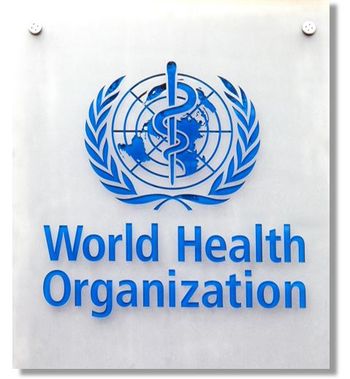
Heart Disease Fells Firefighters More Than Smoke and Flames
BOSTON -- For firefighters the odds of death from coronary heart disease within 24 hours of fighting a blaze are far higher than if they were on desk duty, researchers reported.
BOSTON, March 21 -- For firefighters, the intense hazards they face may not dissipate once the blaze is out.
The odds of firefighters dying from coronary heart disease within 24 hours of fighting a fire were 10 to 100 times higher than during non-emergency on-the-job duties, such as rescuing a cat from a tree, researchers here reported.
Even though fire suppression represents only about 1% to 5% of firefighters' professional time each year, the stress, smoke, and sheer physical effort of battling a blaze, either during it or within a day, accounted for 32% of deaths from coronary heart disease, the investigators found.
Altogether, episodic physical and psychological stress, carbon monoxide and toxic chemicals in smoke, and lack of physical fitness appeared responsible, Stefanos Kales, M.D., of Harvard Medical School here, and colleagues, reported in the March 22 issue of the New England Journal of Medicine.
As expected, the risk of coronary heart disease generally increased with age for each type of duty with those over 60 having the highest rates, while those 20 to 39 years old having the lowest rates.
In an accompanying editorial, Linda Rosenstock, M.D., and Jorn Olsen, M.D., Ph.D, of the UCLA School of Public Health in Los Angeles, emphasized that the stress of firefighting alone was not the cause of these deaths. The evidence is clear, they said, that virtually all firefighter deaths from cardiac causes are secondary to underlying coronary disease.
The Harvard findings emerged from a review of summaries provided by the Federal Emergency Management Agency of the deaths of all on-duty firefighters between 1994 and 2004, except for deaths associated with the Sept. 11, 2001, terrorist attacks.
Estimates of the time spent by firefighters each year performing various duties came from a municipal fire department, from 17 large metropolitan fire departments, and from a national database. Odds ratios for heart deaths during specific duties were calculated from the ratios of the observed odds to the expected odds, with non-emergency duties as the reference category.
Each death was classified as because of cardiovascular causes or to non-cardiovascular causes. Those cases in which death occurred more than 24 hours after the on-duty incident were excluded.
On the basis of the summary report of each death, the deaths were classified according to the specific duty performed during the onset of symptoms or immediately preceding sudden death. These categories were fire suppression; alarm response; alarm return; physical training; emergency medical services, rescues, and other non-fire emergencies; and non-emergency duties.
A death was classified as being associated with fire suppression if it occurred while the person was fighting a fire or at the scene of a fire after its suppression.
During this 11-year period, 1,144 firefighter deaths were reported, with 449 deaths (39%) from coronary heart disease.
Of these, 32.1% were associated with fire suppression, 13.4% responding to an alarm (including false alarms), 17.4% returning from an alarm, 12.5% engaging in physical training, 9.4% responding to non-fire emergencies, and 15.4% performing non-emergency duties. Dr. Kales' team reported.
Physical training included all job-related physical fitness activities, physical ability testing, and simulated or live fire rescue or emergency drills. Non-emergency duties included administrative and fire-station tasks, various fire prevention meetings, parades, and classroom activities.
Compared with the odds of death from coronary heart disease during non-emergency duties, the odds were 12.1 to 136 times as high during fire suppression, 2.8 to 14.1 times as high during alarm response, 2.2 to 10.5 times as high during alarm return, and 2.9 to 6.6 times as high during physical training, the researchers said.
Unexpectedly, professional and volunteer firefighters had different risks of death, depending on the type of duty performed, but for both groups, the risk was higher during fire suppression, the investigators found.
One limitation of the study, the researchers pointed out, was that estimates of odds ratios for specific duties were based on fairly wide approximations of time spent on different duties.
Other limitations included the lack of autopsy information for some of the deaths, and the assumption that the number of deaths from coronary heart disease during any given firefighting duty should be directly proportional to the amount of time spent performing that duty, rather than the time of day.
In the accompanying editorial Drs. Rosenstock and Olsen wrote that Dr. Kales and colleagues did not set out to demonstrate an increased risk of coronary heart disease death among firefighters but that these deaths were likely to occur during specific duties.
The implications of this study are clear, they said, namely that modifiable risk factors, whether or not related to occupation, should be aggressively addressed.
Fire departments should provide pre-placement and annual medical examinations for all firefighters, they advised. Firefighters who enter the workforce are particularly healthy, but they do not necessarily stay so over time. They are not immune to the hazards of overeating and inadequate exercise, Drs. Rosenstock and Olsen said.
Wellness and fitness programs are needed to reduce cardiovascular risk factors, and all firefighters should have annual physical performance evaluations.
Although moderate exercise may mitigate the trigger effects of extreme exertion, they wrote, decreasing the risk involves the usual primary and secondary prevention measures, such as a heart-healthy diet, no tobacco or excess alcohol, regular exercise, and modifying conditions such as hypertension, diabetes, and obesity.
Drs. Rosenstock and Olsen reported no potential conflict of interest relevant to this article.
Newsletter
Enhance your clinical practice with the Patient Care newsletter, offering the latest evidence-based guidelines, diagnostic insights, and treatment strategies for primary care physicians.





















































































































































































































































































